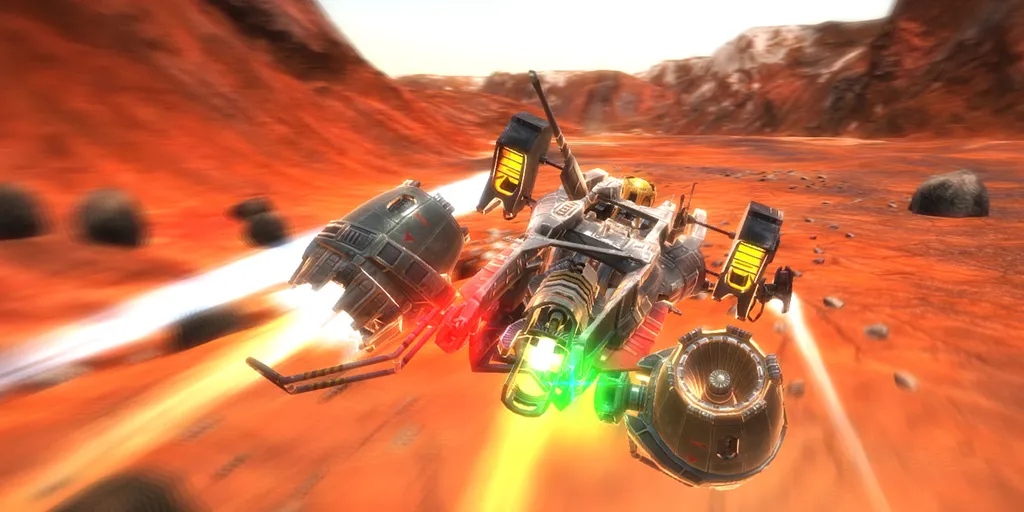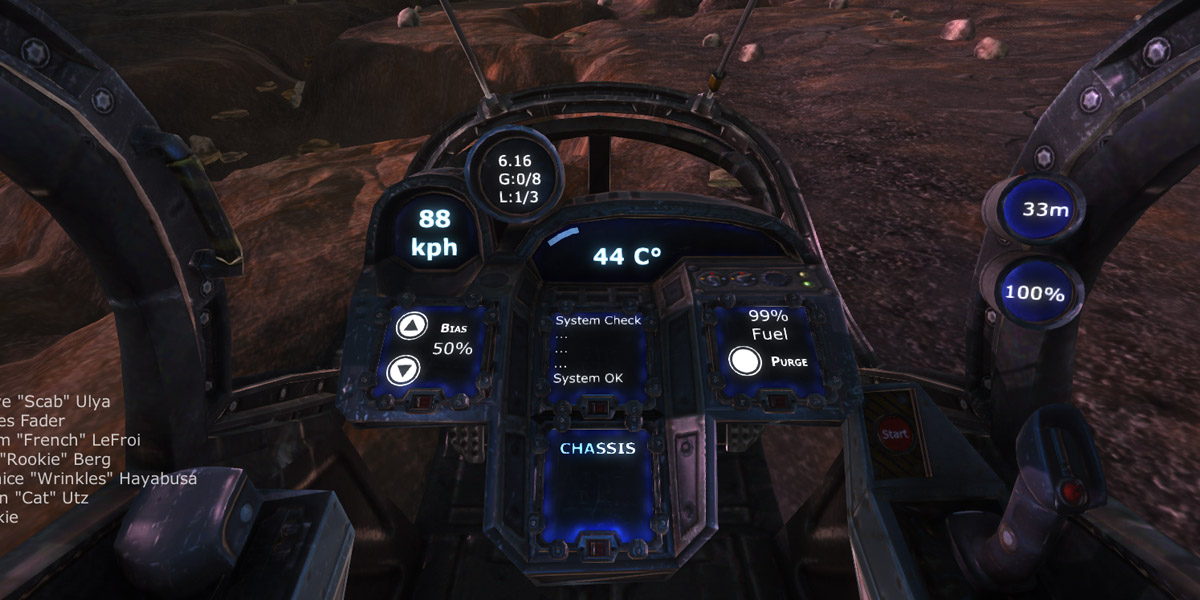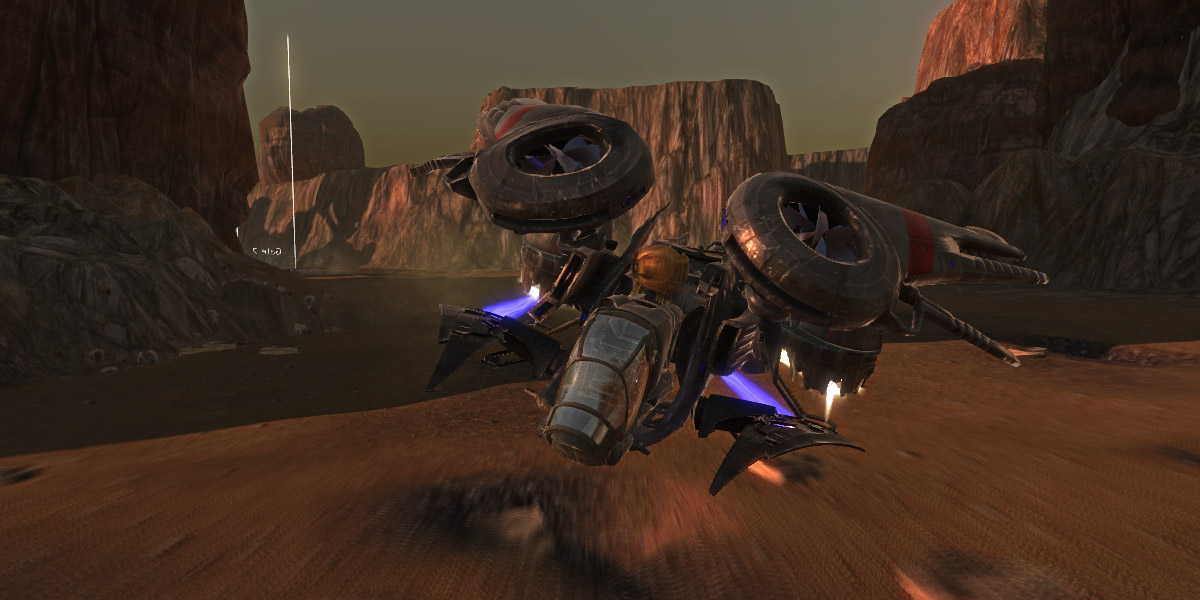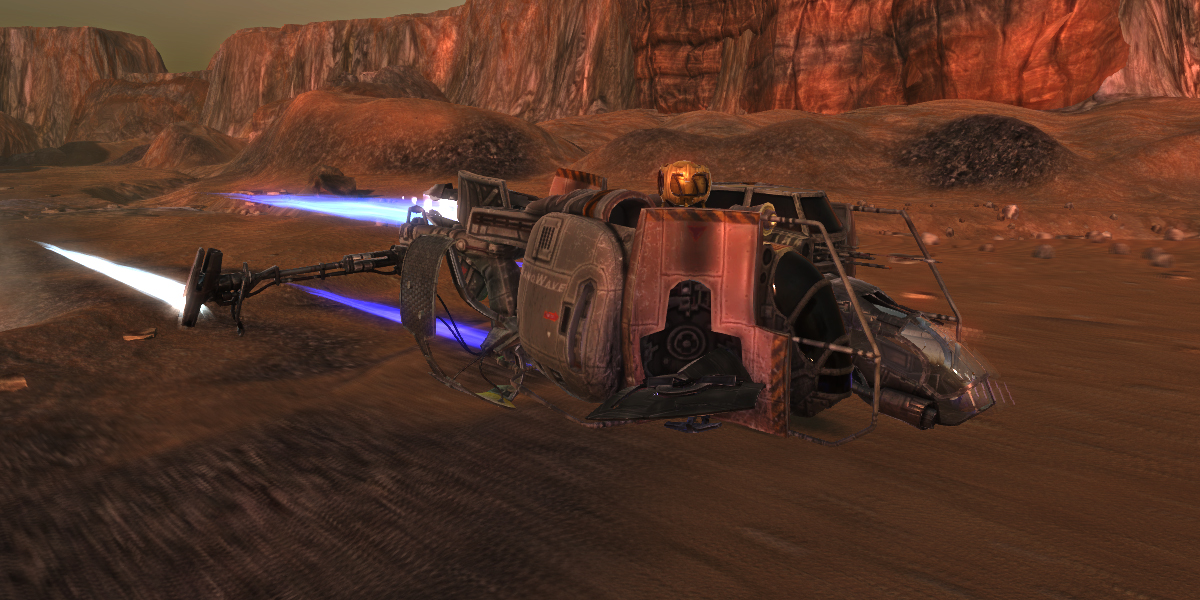There’s something of a renaissance for sci-fi racers lately thanks at least somewhat to the every-growing popularity of VR. With amazing homages to games past like Redout and Grip cashing in on the greatest racers of the genre from the original PlayStation era, it’s nice to see a game that takes something familiar and goes off the beaten path. In the case of Vector 36, racing goes way off the path and out into the wild rocky wastes of Mars.
Vector 36 is a hovercraft racing game, but don’t expect a lot of similarities with RedOut (or its source material, WipeOut). The pacing, feel, and mechanics are about as dissimilar as you can get. Where those other sci-fi racers are about speed, forcing players to move precisely through outrageous tracks, Vector 36 is about mastering physics under less than optimal conditions.
The game picks up speed as you progress, but starts off outright slow. It’s an exercise in learning thrust-based controls that hearkens back to the days of frustration-filled lunar landing games. If you missed this strange subgenre, they were usually based around simply trying to land a very pesky lunar lander module using side thrusters. One wrong move–a split second too much thrust–and you were toast.
Vector 36 isn’t quite so unforgiving in its mechanics, but still gave me plenty of flashbacks to those old games. Exercising patience in a racing game might seem counter-intuitive, but once you get into the rhythm of Vector 36, things start to fall into place. One thing is certain, the game is very much a cross between a hovercraft racing gameand a (limited) flight simulation.
It’s much more complex than any recent sci-fi racer and the learning curve is steep.Vector 36 isn’t in early access, so a lot of the issues here have to be taken at face value as we hope they get fixed in forthcoming updates. Taking that into account, this is still a remarkably complete game with miles of Martian dust to blow through.
The premise is vague, but essentially you’ll be speeding through the surface of Mars during a massive terraforming operation. Terraforming actually plays a huge role in the racing, since the process involves cooling down the surface significantly. Temperature is a constant threat to your skimmer craft, so areas within the radius of a terraforming operation allow you to use the speed boost with abandon as it’s cold enough to keep the engine from exploding.
Balancing speed and heat is a major element. The heat monitor amps up quickly under high speed and pushing your skimmer too far can easily end in severe damage. The damage model used on the skimmers is surprisingly in-depth as well. Hitting obstacles, including the ground, can cause you to lose parts as opposed to more simplistic universal damage. The damage model may be a bit too extreme for more casual gamers, since it’s incredibly unforgiving.
Unforgiving is a good word to use for much of the game’s mechanics. Past the initial league, where speeds are nearly painfully slow, when the speeds increase, so does the danger and difficulty level. The exacting thrust controls are far more unwieldy at higher speeds, so things can get frustrating in a hurry.
This is especially true with the uneven AI, which ranges from absurdly overqualified to middling. Sci-fi racers tend to have a reputation for high difficulty though and, like most, Vector 36 can be very satisfying to master. The main problem with the game is, rather oddly, not the racing, but the overall UI and, especially, remarkably unfriendly skimmer customization process.
Nearly every part on your craft can be upgraded and altered. By altered, we mean actually changing where the part is installed on the skimmer. You can change the angle, height, and other variables of parts like thrusters (and a range of other pieces), then see how it affects the skimmer’s performance. It’s a micromanaging racer’s dream, but the interface is obtuse in the extreme.
It should be noted that while Vector 36 supports things like ghosts and leaderboards, actual multiplayer is regrettably not available yet. Thankfully, there’s a beefy single player championship campaign to concur, but the inability to play against actual humans could be a considerable drawback for many. Multiplayer is a planned addition in a future update though.
Visually, the game looks great. Although Mars isn’t the most diverse landscape, the use of ravines, surface contour, and other elements makes the tracks look appealing and natural. The skimmers are amazingly detailed and animated whether viewing them from inside the cockpit or in a third person view. Vector 36 is also one of those games that just works better in VR.
Racing games are an ideal fit for VR and the ability to look around independent of where you’re driving helps immensely. Vector 36 actually plays better when wearing the HMD, because the control pad interaction is simpler and allows you to use your thumbs purely to control the skimmer instead of having to constantly shift the camera around to see the entire landscape ahead. Better yet, as a Steam VR game, it supports Rift, Vive, and OSVR setups.
If you want your science fiction racing to be more hardcore and realistic, Vector 36 is definitely the game. It starts out slow, but past that initial hump, speeds up considerably and requires mastery of some of the most intensive physics around. Though not perfect and lacking multiplayer, there’s a solid amount of content here with hopefully more on the way.
Vector 36 is now available on Steam with official support for Oculus Rift, HTC Vive, and OSVR for $24.99. Read our Game Review Guidelines for more information on how we arrived at this score.




























